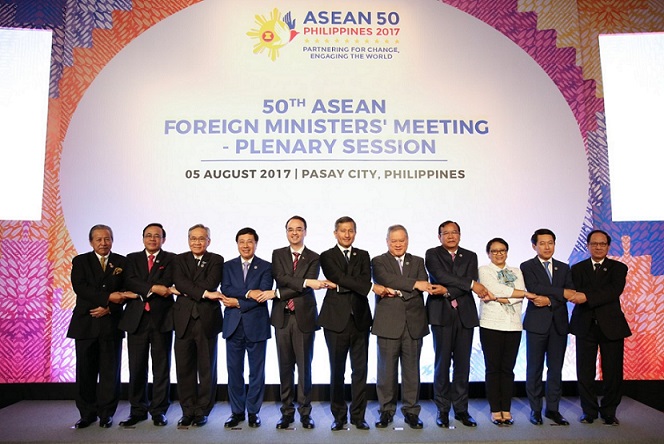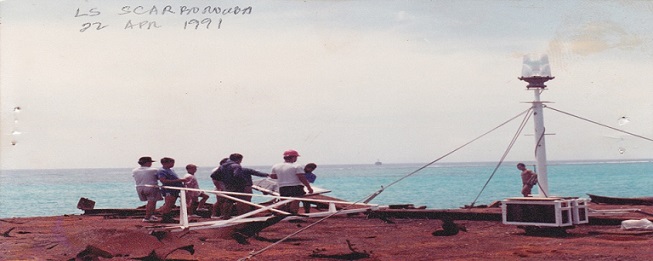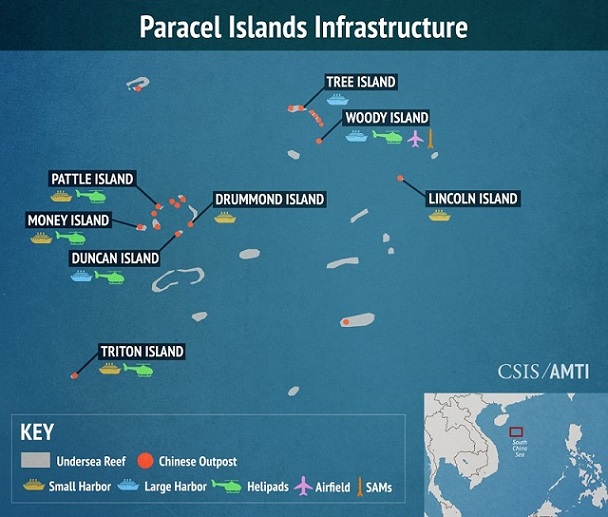
The agreed framework for a Code on South China Sea was the most important achievement of the recently-concluded meeting of the foreign ministers of the Association of Southeast Asian Nations which segued to more meetings with its dialogue partners and the Asean Regional Forum.
After the much-awaited meeting between ASEAN foreign ministers and China Sunday, Chinese Foreign Minister Wang Yi announced that China have agreed on the framework for a Code on SCS. He said substantive consultations will be undertaken in the coming months with the end view of an implementable COC on South China Sea.
Aside from the question of when is the actual COC expected to be completed, is another question: what kind of COC on South China Sea would it be.
Wang gave one clue. Asked if the framework COC would include bilaterally-disputed areas, Wang said “Regarding bilateral disputes, according to Article 4 of the DOC (Declaration on the Conduct of Parties in the South China Sea) they should be address directly by parties involved thru dialogue and consultations.”
Disputed areas in South China Sea where there are only two claimants are Scarborough Shoal also known Panatag Shoal and Bajo de Masinloc, 124 nautical miles off Zambales which is also claimed by China; and Paracels which are disputed by China and Vietnam.
The Spratlys, on the other hand, are being disputed by Brunei, China, Malaysia, Philippines, Taiwan and Vietnam.

Surely, this agreement on bilaterally-disputed areas favor China which has consistently pushed for it. It is interesting now to see if it would hasten the development of Sansha City, established in July 2012, which covers Paracels and Scarborough Shoal.
This aspect of the COC framework is another 180-degree turn around by the Philippine government from the position pursued by the previous administration of Benigno Aquino III with former Foreign Affairs Secretary Albert del Rosario.
Aquino and Del Rosario’s mantra in dealing with China was “multilateral” even in Scarborough because they said, in a one-on-one, the Philippines would get overwhelmed by China because of its size, economic clout and military might.
Former Ambassador to the United Nations Lauro L. Baja, Jr. had said this was a wrong attitude because across each other in the negotiation table, both parties are equal. It depends on the quality of a country’s negotiator.

Del Rosario also failed to rally other ASEAN countries behind the Philippines against China. In June 2012, at the ASEAN Foreign Ministers Meeting in Cambodia, Del Rosario vigorously pushed for a text in the statement that has reference to the Scarborough shoal incident where the Philippine and Chinese ships were on a two-month standoff. Vietnam lobbied for a text on China bidding out oil blocks within Vietnam’s Exclusive Economic Zone. Cambodia, a close ally of China and the ASEAN chair that year took a position that those issues were bilateral for Philippine and China and Vietnam and China.
That was a first in the history of ASEAN that no joint communique was issued.
ASEAN and China foreign ministers agreed on a three-step process to start the negotiations of an actual code – the announcement of the adoption of the framework, convening a meeting at the end of this month to discuss the modalities for the negotiations of the Code and announcement of the start of COC negotiation by the leaders of ASEAN and China in the summit in November.
VERA Files has tracked the 25-year journey of the COC on South China Sea. (http://verafiles.org/articles/vera-files-fact-sheet-timeline-asean-and-china-code-conduct).
As the chronology shows, it has been a bumpy ride.
Coming out with a COC is not a be-all and end all of solving the conflicting claims in the South China Sea. As a Philippine diplomat said, “we should make sure that it is an implementable COC.”
out of topic po ito, but has something to do with cayetano. I’ve read somewhere po that american thinktank has spotted a chinese ship in pagasa, but cayetano shrugged off the sighting. why are we concerned kuno if chinese ship is spotted? american ships had been spotted numerous times and continue to be spotted, but why the alarm when it comes to chinese ship? china is friend kuno so dapat daw wala tayong ikabahala.
sa akin lang po, american ships come and go and ensure there is safe navigational passage, so no cause for us to be alarmed, whereas ships coming from china come to reclaim and occupy and build permanent structures, and that’s the difference.
china is maybe up to its old trick again and cayetano ought to be concerned. it could be that during his watch, pinas lose puerto princesa to china.
at kung talagang friends ni cayetano ang china, china ought to invite him over to the shoal and have a look see at the structures there, be there and be feted at lest at one of the grand opening of one of the structures, not yong ini-ignore lang siya. if not, it could only mean na maybe, china is not really friend and cayetano is not trusted by them.
action speaks louder than words. and china should at lest invite cayetano to see structures constructed over at the shoal.